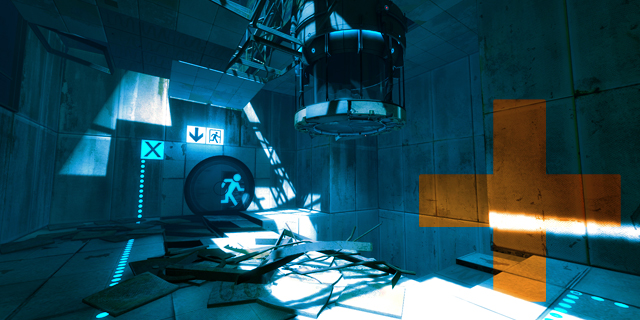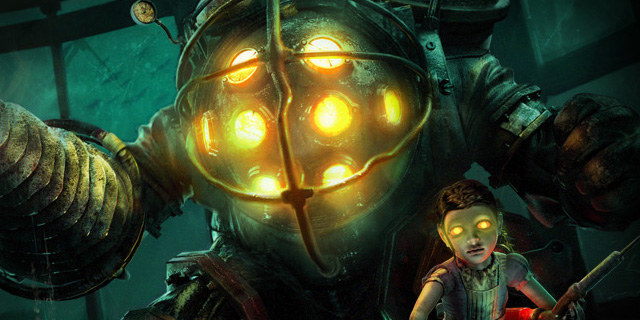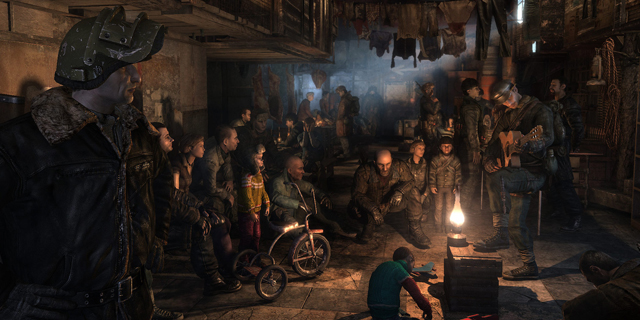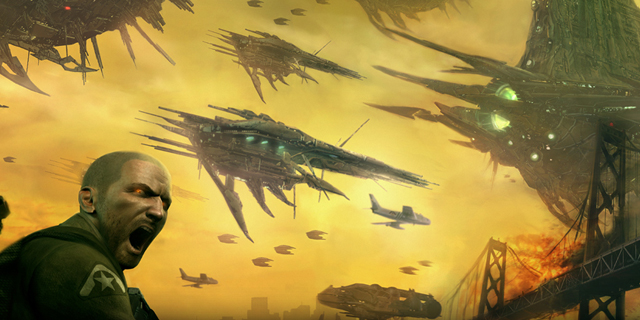
As an interactive medium, games have a lot of opportunities to tell stories in different ways that differ from the standard movie-like cutscenes you would expect. A lot of Valve’s games, Half-Life and Portal most of all, do a great job of immersing you in the story while still allowing for player control. That is a great way to seamlessly blend the narrative with gameplay, but my favorite storytelling method is actually something that is even more reliant on player interaction than any other. It answers the question: How do you tell a story without directly telling a story?
Games can paint a bigger picture than you might realize without utilizing a single cutscene or explicit event that lays out pieces of the narrative right in front of you. Most games do this, but there are a good number of them that allow you to witness the narrative through other means. These are things that could expand on an already present story or fill in necessary gaps, but can be missed or ignored completely. Of course, if it’s a good enough story, missing those extra tidbits might not detract from the narrative. They might just build on something and make it something that goes above and beyond what you might expect.

The first example I can think that made me realize the importance of this form of narrative is BioShock. Throughout the game, you pick up audio diaries, each filling in a small piece of the ever-growing tale of Rapture. A lot of them you will run into without even looking for them, but some of the best audio diaries are hidden, making sure you work to expand upon an already intriguing mystery. It requires more effort than simply walking into a room to having exposition dumped on the character, but there is a greater reward involved. These diaries are completely unnecessary to enjoy the central story in BioShock, but they add so many intriguing layers. One’s perception of the story could be entirely different from person to person just based on the number of audio diaries that you found, which itself is something I find fascinating.
BioShock isn’t the only game that did this. A lot of games before and since its release have followed in the example of scattering clues to help fill in the plot for players who want to dig deeper. Mass Effect’s gigantic codex allows players to dig deeper into the series’ expansive lore, but can be completely skimmed over for those who simply want the meat and potatoes plot that each game provides. The best parts of this form of narrative is how entirely optional it is; you can completely skip over anything and everything regarding these pickups and, if written well enough, still be left with an enjoyable story.

Another recent example is Metro 2033, a game full of small details that might go right over many players’ heads. Dmitry Glukhovsky’s novel on which the game is based is dense with small details and amazing developments that most likely had to be cut from the game. However, many of them made it into the game in small ways. For those unfamiliar here’s the basic idea: both the book and the game is set in a post-apocalyptic future where most of the world has been reduced to rubble and is full of radiation. The survivors have taken to creating underground cities for them to live in to be protected from the horrors of the outside world. Despite the dangers, people continue living their lives as best they can, and the details in the game that depict these areas are astounding and very true to the source. Knowing this is essential to why Metro 2033 works so well in this regard.
When you find yourself navigating through the game’s many small town-like areas, full of people to talk to and marketplaces to explore, you might notice many things that could be completely overlooked. The way characters react to you, the things they discuss, the friendly community that surrounds them despite the tragic world that is just outside of their doorstep. It’s all so fascinating to think how alive these places are despite how dead the rest of the world seems. Metro 2033’s central story is good and features plenty worth talking about, but when you take the time to examine all of the small details, you begin to understand and feel a part of this world.

There is a downside to this form of narrative though: it can be easily abused. One particular example: Resistance 2. The original Resistance told a relatively interesting story that felt focused while still giving the player plenty of small details about the Chimera threat and how the world was changing because of it. Resistance 2 reduced this fascinating setup to a muddled plot with very little idea of what exactly was happening from one level to the next. The game itself was a lot of fun, but a lot of what made the first game so interesting was completely gone. The last couple of levels feel more focused and the ending is fantastic, but by that point it’s too little too late.
That being said, Resistance 2 relied heavily on letters and notes scattered all throughout the world that filled in very important details about different events happening in the plot, some of which were absolutely pivotal to know exactly what was happening at a given moment. A few of these notes were in obvious places, but if you wanted to follow the story, you needed to go searching for them. To force the player to seek out what are essentially collectibles to make sense of a plot is awful. It doesn’t expand on the narrative, it is the narrative. This gives the player a sense that Insomniac threw the story in at the last minute and simply created a lot of fun levels with no idea of how to progress the story.
Thankfully, I haven’t seen too many games following Resistance 2’s example. Games like Metro 2033 and BioShock, among many others, demonstrate how you can provide a narrative experience that lets the player fill in the small gaps as they discover them. There will always be a narrative, or at least some semblance of one, but there is also always room for expansion. This ability the player is given to expand upon the story if they so desire is a fascinating approach to interactive storytelling and something I hope we continue to see in the future.



















